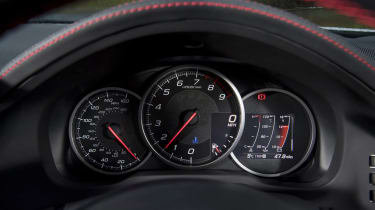Subaru BRZ (2012 - 2021) review – engine and gearbox
Just the one engine, a 2-litre flat-four, with manual and automatic transmission options. Power is sent to the back through a limited-slip differential, just how it should be
You won’t find the ubiquitous in-line, turbocharged four-cylinder under the Subaru’s bonnet. Instead, there’s a naturally aspirated 2-litre four-cylinder boxer engine.
If you’re unfamiliar with such a layout, you should know that Subaru has been using boxer engines for years. So too has Porsche, though generally with an extra pair of cylinders. Rather than having all the cylinders in one line, with each piston having their own journal on the crankshaft, the BRZ’s cylinders are laid flat either side of the crankshaft. A pair of opposing pistons then use the same crank journal meaning each movement counteracts one another, creating a balanced and smooth engine.
One of the other benefits of this cylinder arrangement is that it keeps the engine very low and flat and helps reduce the car’s centre of gravity. As it’s so flat it can also be mounted further back in the chassis, almost encroaching into the transmission tunnel, to help weight distribution. Flat engines are something Subaru has championed for some time, and each of its cars is fitted with either a flat-four or flat-six.
Is it effective? Well, in the BRZ, maximum torque, 151lb ft, is delivered from 6400 to 6600rpm, while peak power, 197bhp, isn’t reached until 7000rpm. In a world of turbo engines that reach maximum torque at little more than tickover, having to work for the BRZ’s performance is a little unusual.
The BRZ comes with a six-speed manual as standard and it’s the transmission choice that we’d opt for. There’s a satisfyingly mechanical feel to the changes, and while the lever looks fairly tall the throw through the gate is as tight as they come.
The six-speed automatic comes with the obligatory paddleshift manual mode. It’s not a bad gearbox, but its slightly unenthusiastic responses don’t match the immediacy of the rest of the car and it takes away a degree of control and involvement. For a car that is all about immersing you in the pure thrills of driving and exploiting each mechanical element for your enjoyment, an automatic gearbox simply isn’t appropriate.
With either transmission, drive is sent to the rear wheels through a Torsen limited-slip differential. At this price point there aren’t many other vehicles that give you the desirable combination of a naturally aspirated engine, a manual gearbox and rear-wheel drive with a locking diff.




